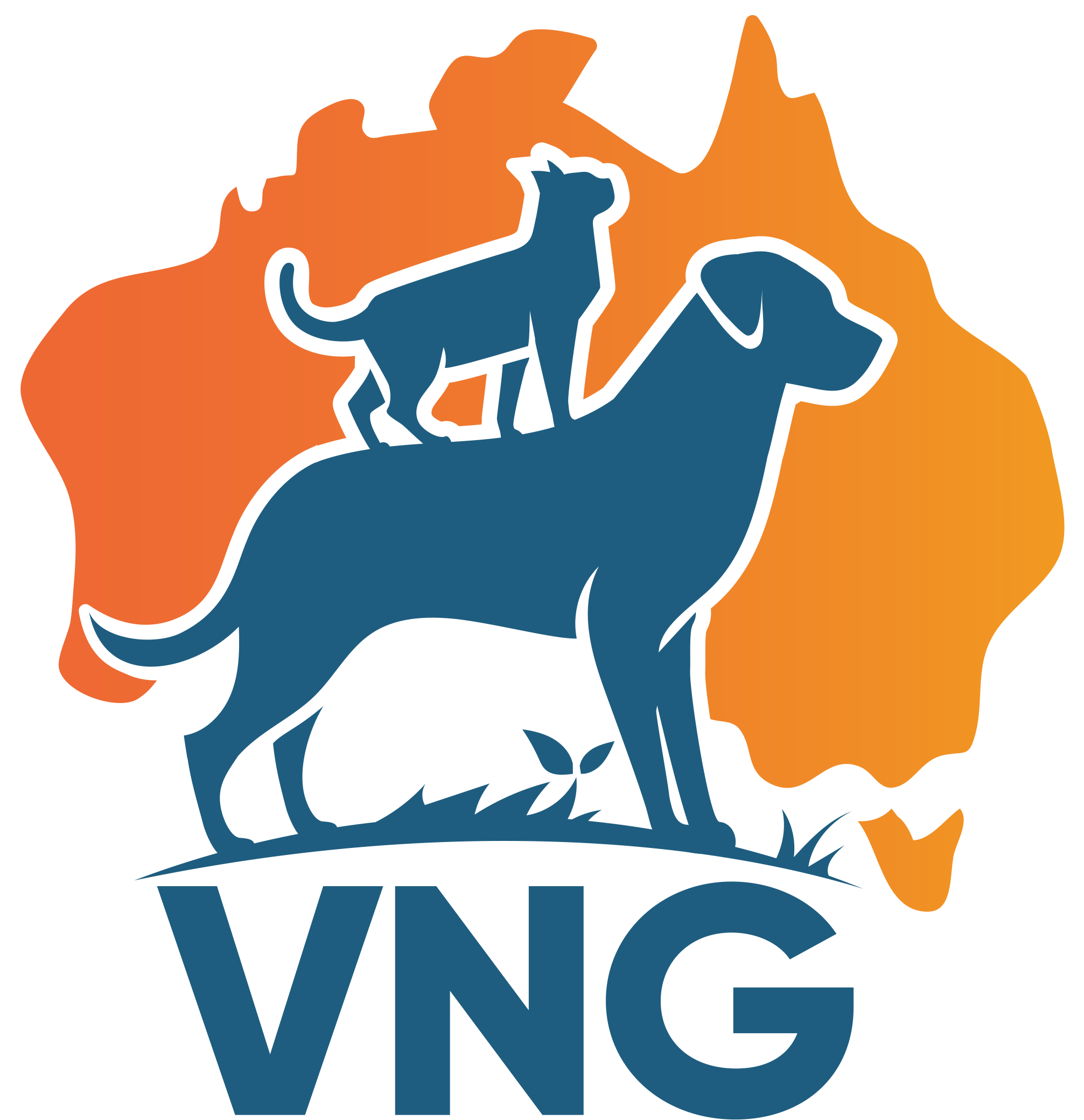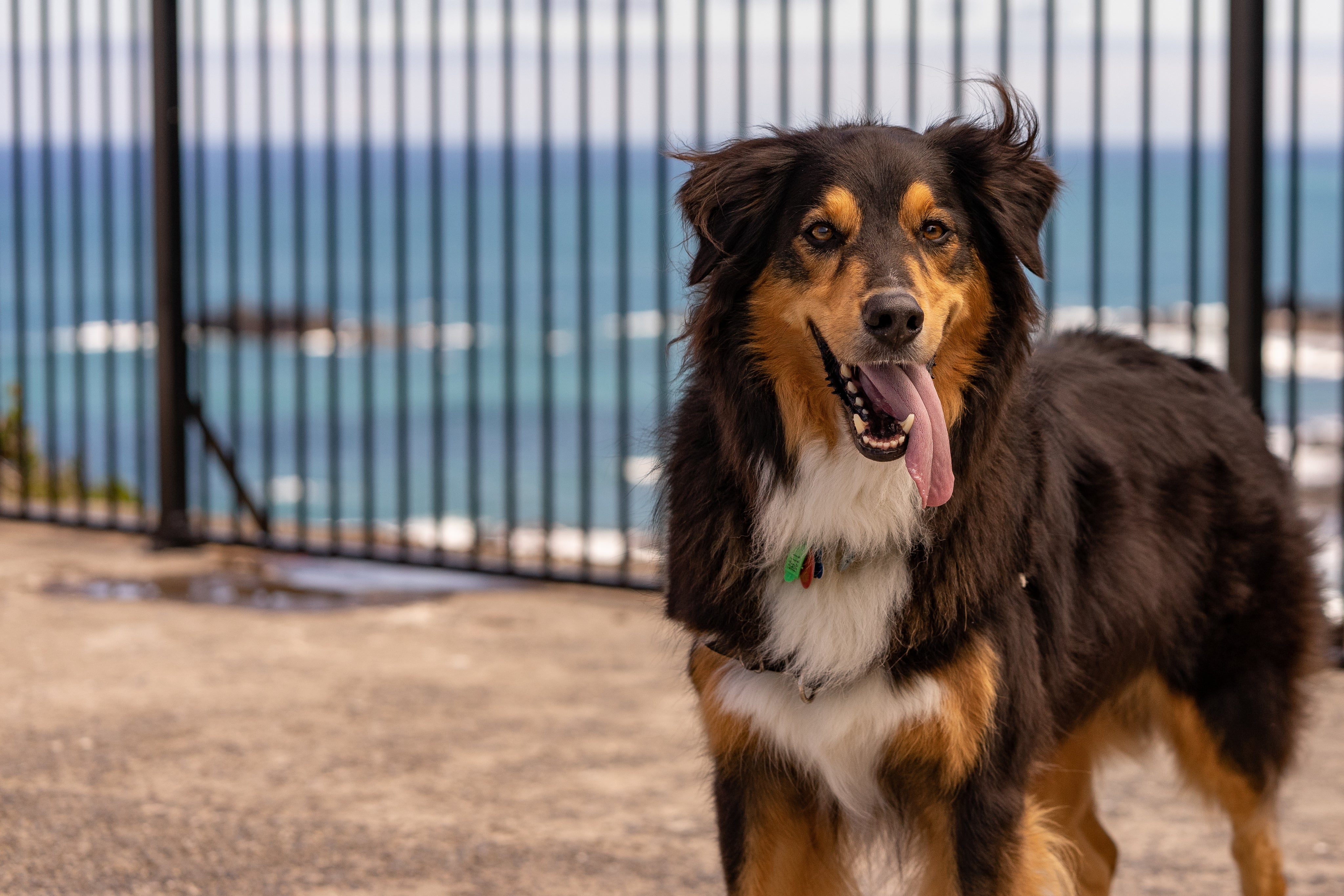
Feeding guide for dogs with copper-associated liver disease
With CompleteMe Hepatic Canine
Make low copper, moderate protein therapeutic dog food at home quickly and easily.
Formulated for dogs with copper-associated hepatopathy. Choose the meat and ingredients you would like to use with our simple, flexible guide.
Makes 1 kilogram of food.
Ingredients
300 grams of meat (2-10% fat)
(see FAQs below for recommended meat types and cuts)
400 grams of cooked starchy vegetables and/or fibre-rich whole grains
(choose from: sweet potato, potato, quinoa, brown rice, oats, or pasta. For any included grains, please weigh out the required amount after cooking)
280 grams of colourful vegetables and fruit
2 mL omega-3 rich oil (2 x 1000 mg capsules)
(choose from: fish oil, salmon oil, krill oil, or marine algae oil)
3 teaspoons of omega-6-rich oil
(choose from: hempseed oil, walnut oil, flaxseed oil, pumpkin seed oil, corn oil, canola oil, or sesame oil)
10 grams of CompleteMe Hepatic Canine
Optional:
½ to 1 level teaspoon of one of the following:
Dried turmeric, chia seeds, fresh chopped parsley or mint
Or
½ to 1 level tablespoon of one of the following:
Full fat natural yoghurt or kefir, bone broth, plain scrambled egg, or canned sardines or mackerel (in spring water)
Directions
- Gently pan-fry the diced meat with 50 mL water until cooked.
Omit this step if you would prefer to use raw meat. - Steam or microwave the chopped vegetables until very soft.
- If using grains, cook as per the manufacturer's instructions until soft.
- Combine the meat (including liquid from pan), cooked vegetables and grains, diced fruit, and oils, and mix well.
- Allow to cool then add 10 grams of CompleteMe Hepatic Canine and mix again.
- Portion and refrigerate, or freeze as desired.
Storage and safety
For homemade diets only
Do not add to any commercial dog food, or use with any other nutritional supplements (containing vitamins and/or minerals).
Raw feeding safety
For raw meat, freeze for 10 days before use to destroy parasites like Toxoplasma. In areas with Trichinella, please freeze pork for 3 weeks before use.
Storage and feeding
Larger batches can be made and frozen for convenience. Keep refrigerated food for 3 days, and frozen food for 3-4 months. Please discard any uneaten food after 30 minutes.
Feeding guidelines
Toy/mini breeds (<5 kg): 150-400 g/day
Small breeds (5-10 kg): 270-700 g/day
Medium breeds (10-25 kg): 600-1250 g/day
Large breeds (25-45 kg): 1100-2100 g/day
Giant breeds (45-80 kg): 1550-3500 g/day
Feeding quantities are estimates, and are based on fresh food which contains significantly higher moisture than dry food. The energy density of the diet will also change depending on the ingredients you select (for example, lower fat = less energy dense = more food is needed).
Adjust up or down the amount of food based on your dog's size, body condition, age, activity level, and medical conditions.
If your dog gains unwanted weight, reduce the amount you are feeding by 10-15% and reweigh after a week. If they have unwanted weight loss, increase the amount you are feeding by 10-15% and reweigh after a week. Continue to adjust until the right amount of food is determined.
Please consult with your dog's veterinarian as needed, especially if your dog is underweight, has very advanced disease, or multiple medical conditions.
Learn how to quickly body condition score your dog here.
Nutritional information
All possible combinations of the ingredients listed above have been checked to ensure that the diet contains moderate protein and fat, controlled copper, and is enriched with omega-3 fatty acids, antioxidants, and fibre.
The average kcal/gram for the diet is: 1.1 kcal/gram
The average protein on a caloric basis is: 75 g per 1000 kcal ME
The average protein on a dry matter basis is: 33.5%
The average fat on a caloric basis is: 34.5 g per 1000 kcal ME
The average fat on a dry matter basis is: 15.5%
Average copper for the diet is:
2.8-7.5 ppm dry matter basis
0.63-1.6 mg per 1000 kcal ME
Please see FAQs below for lowest copper options
Average EPA + DHA for the diet is:
0.32% dry matter basis
0.67 g per 1000 kcal ME
FAQs
What meat can I use?
A large number of meats and cuts can be used with CompleteMe Hepatic Canine. Variety is important; we strongly recommend feeding a range of different meat types and cuts. Fattier meats (7-10% fat) will produce a lower protein diet; leaner meats (2-6% fat) will produce a higher protein diet.
Please be careful to avoid feeding any liver (either in the diet or as treats) or shellfish, which is very rich in copper.
- Poultry and eggs:
Skinless and boneless chicken thigh, drumstick or breast, mince (2-3% fat)
Skinless and boneless turkey or duck breast or turkey mince (6% fat)
Chicken or duck egg (no shell) - Pork:
Lean pork mince or diced pork loin with 5-10% fat, rump steak (trimmed) - Lamb, beef, or goat:
Extra-lean diced lamb or goat meat (including heart or tongue) with 5-10% fat
Lean beef mince, gravy or chuck beef with 5-10% fat, blade, round or rump steak (fat trimmed off), eye fillet or topside roast or steak (fat trimmed off) - Game meat:
Lean kangaroo or wallaby mince or steak with 2-3% fat
Wild or farmed boneless rabbit or hare meat
Emu fan fillet or flat fillet (1-3% fat)
Wild boar backstrap, mince, boneless leg, or loin chops
Crocodile, tail or leg meat (2-3% fat) - Fish:
Skinless and boneless white fish fillets, like whiting, hoki, ling, or barramundi
Tuna, canned in springwater
(please don't feed fish exclusively) - Dairy
Low-fat cottage cheese (2% fat)
Which vegetables and fruits are safe for dogs with copper-associated liver disease?
We recommend avoiding mushrooms or kale, which are very high in copper.
For vegetables, try pumpkin, broccoli, cauliflower, green beans, green peas, carrot, zucchini, squash, spinach, turnips, parsnips, watercress, Asian greens, tomato, capsicum or cabbage.
Both fresh and frozen vegetables are fine. We recommend steaming or microwaving for most vegetables, however baking can also work well sometimes.
For fruit, try strawberries, blueberries, raspberries, apple, pear, banana, mango, peach, plum, kiwifruit, guava, papaya, pineapple, watermelon, rockmelon or honeydew melon. Please be very careful to remove any pits or stones, and avoid toxic fruit like grapes, raisins or currants.
How can I store the food?
This makes just over 1 kilogram of food, which can be portioned and fed immediately, or stored in the fridge (max 3 days) or freezer (max 3 months) until needed.
Can I use raw meat?
You can include the meat raw or cooked, depending on preference. For raw human-grade meat, be sure to freeze the meat for 10 days prior to use. For pork (in areas with Trichinella, freezing for 3 weeks prior to use is sensible. Please discuss raw-feeding with your dog's veterinarian; raw feeding is not suitable for all dogs or households.
What ingredient combinations produce the lowest copper diet?
The following combinations produce a diet with 0.62–0.78 mg copper per 1000 kcal ME, which is similar to commercial prescription hepatic diets like Royal Canin Hepatic or Hill's Prescription Diet l/d (L/D):
- Turkey mince (7% fat) + brown rice
- Beef mince (10% fat) + rolled oats
- Pork mince (10% fat) + pasta
- Skinless and boneless white fish, rabbit meat or crocodile meat + pasta
Please include the other ingredients and supplements as per the instructions above.
Including goat, kangaroo or emu as the protein choice will increase the copper. Similarly, including quinoa, wholemeal pasta, or sweet potato as the carbohydrate will also produce a higher copper diet.
My dog needs a low fat and low copper diet; which ingredients should I choose?
For a low fat diet, select leaner proteins. The following are the lowest fat combinations:
- Kangaroo fillet/steak or mince + pasta: 20% fat ME basis
- Skinless chicken breast + pasta: 20.5% fat ME basis
- Canned tuna + sweet potato: 21.2% fat ME basis
- Boneless rabbit meat + sweet potato: 23.3% fat ME basis
- Skinless chicken breast + wholemeal pasta: 23.4% fat ME basis
- Low-fat cottage cheese + brown rice: 24.5% fat ME basis
My dog has allergies, can I use novel proteins like emu or crocodile?
Yes, using novel proteins is fine. Please select proteins with 2-10% fat only. Some options could include:
Emu fan or flat fillet, or full rump
Crocodile tail or leg meat
Wild boar shoulder (deboned) or mince
Lean diced boneless goat (visible fat trimmed off)
Boneless rabbit meat
For the lowest copper diet, we recommend using either crocodile or rabbit, if possible.
Need to restock?
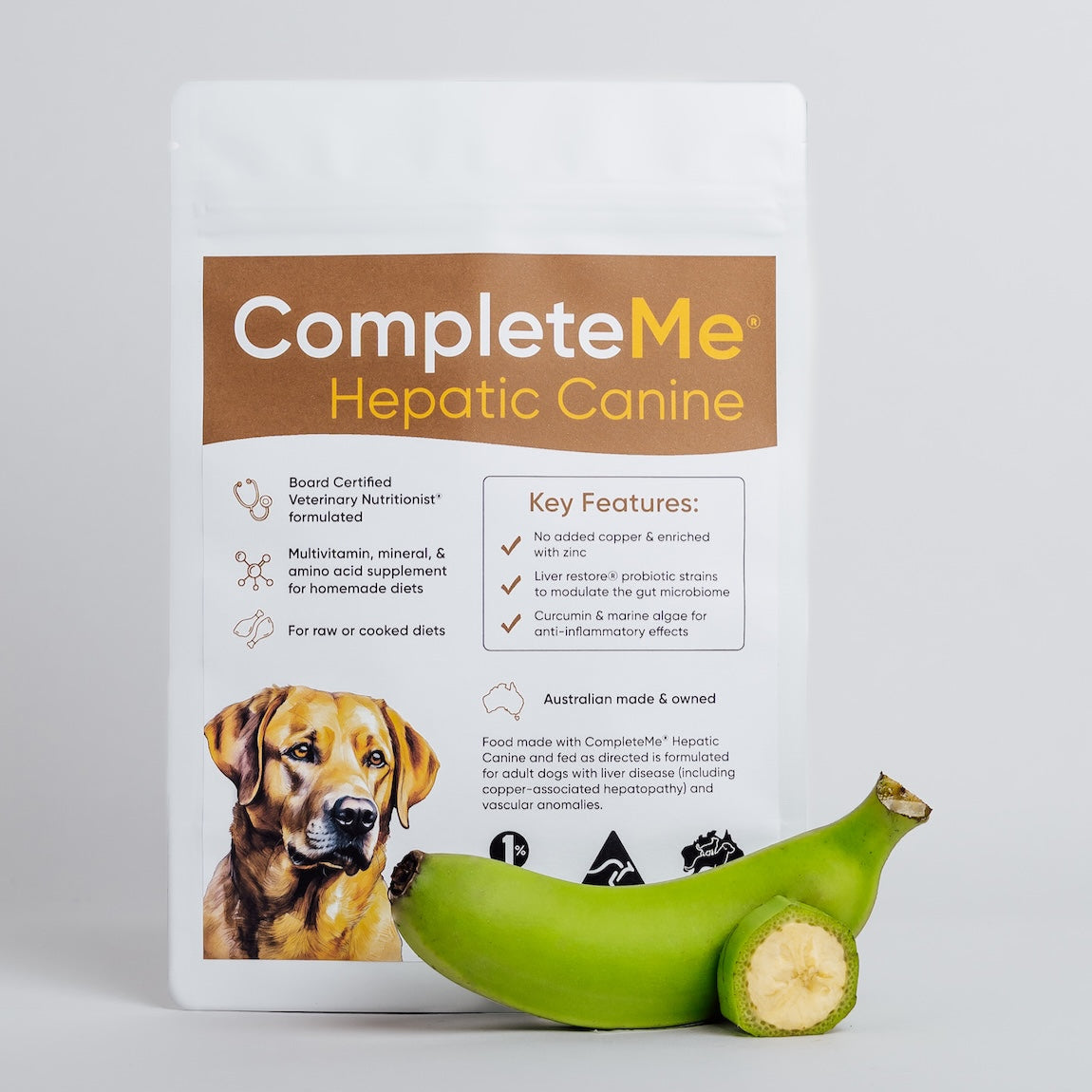
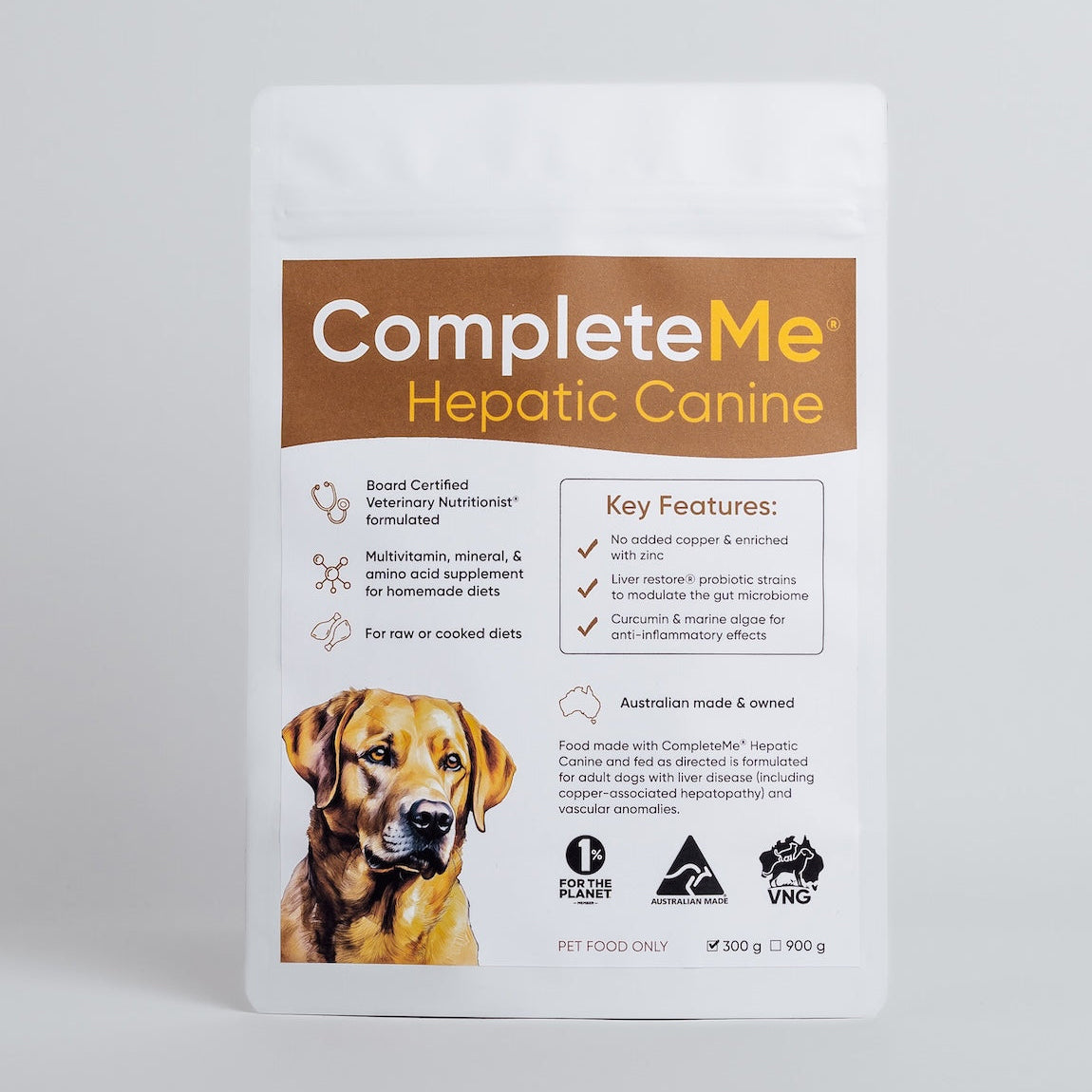
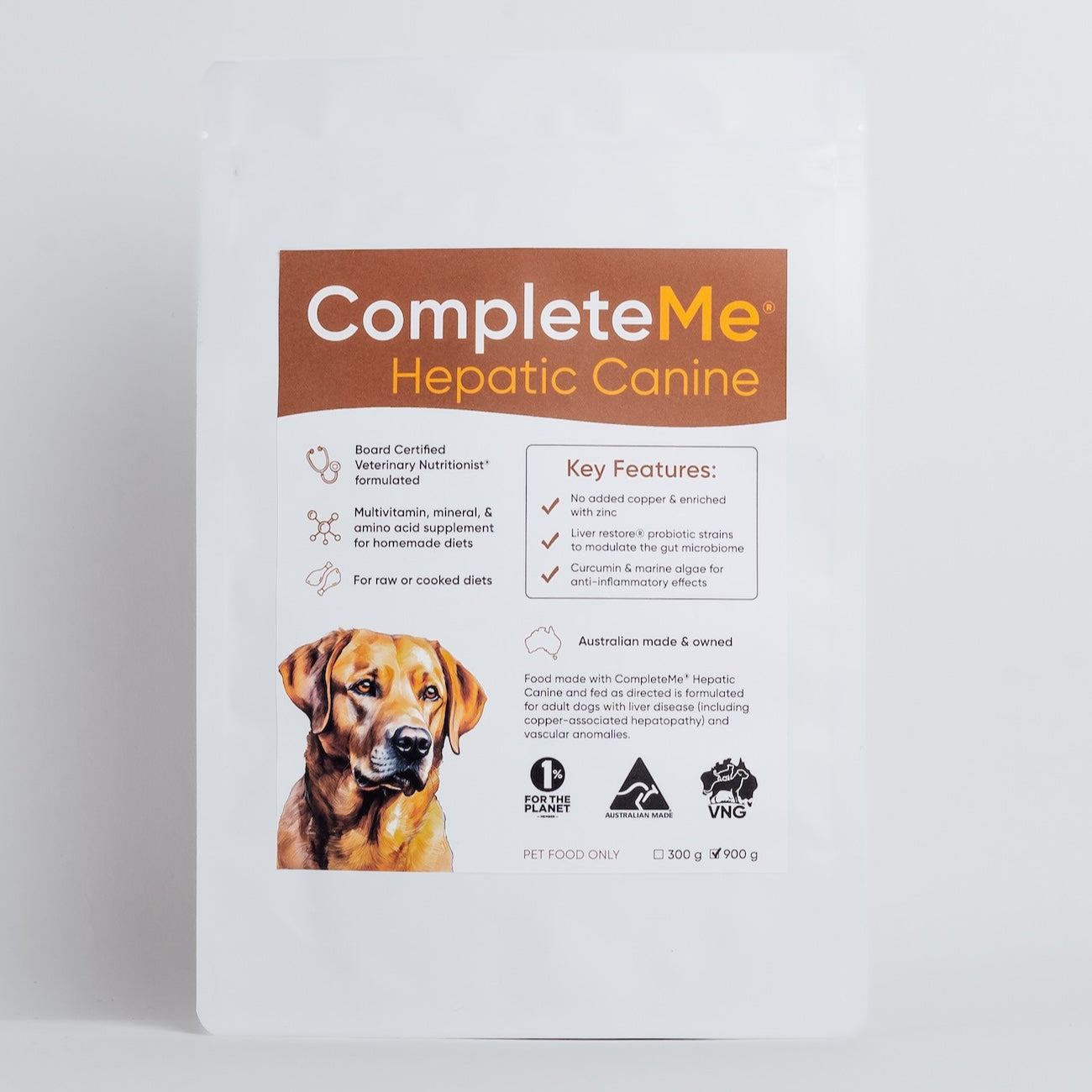
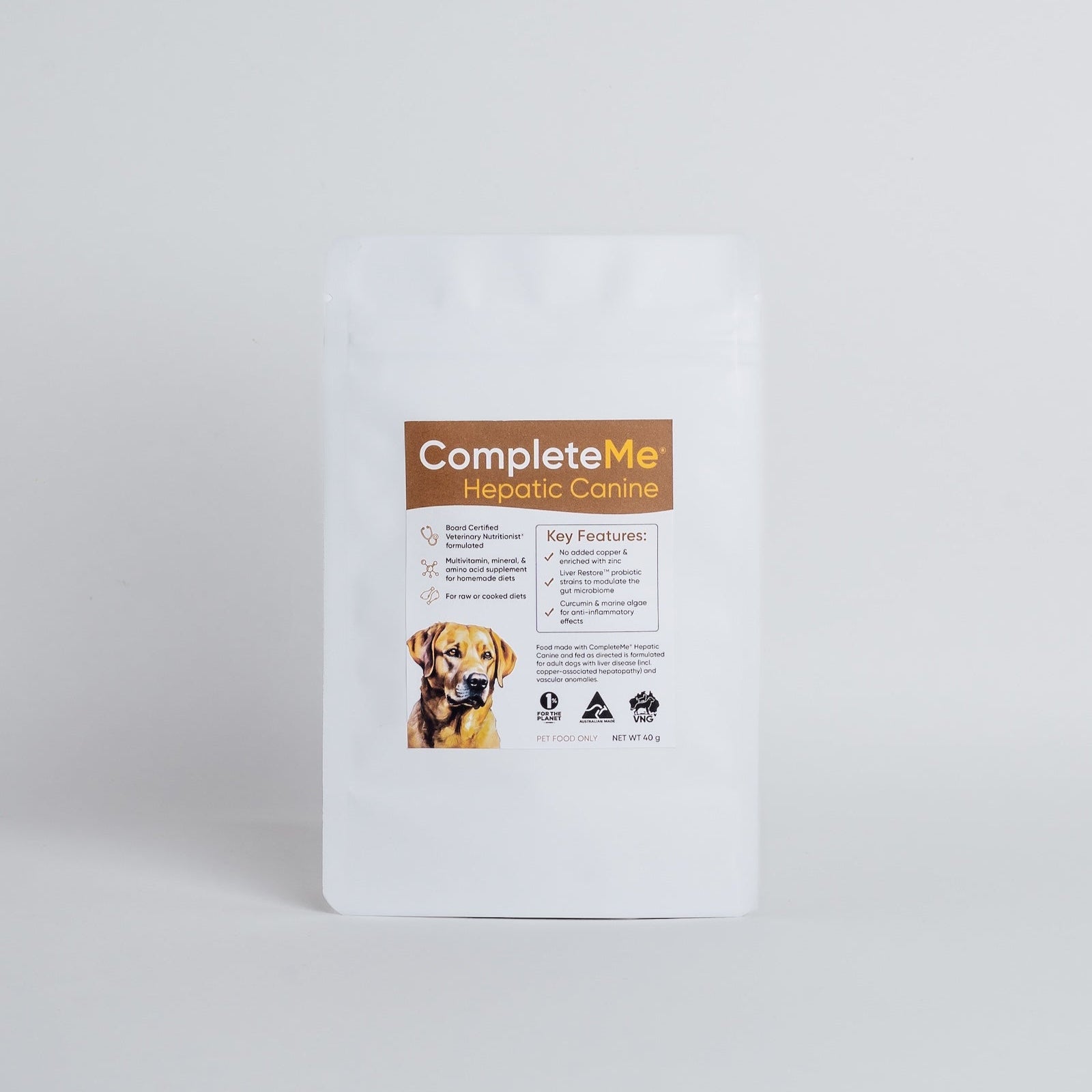
CompleteMe Hepatic Canine
CompleteMe Hepatic Canine contains essential nutrients, omega-3, fibre, and therapeutic compounds to create a balanced hepatic diet with controlled copper at home.
Formulated for the management of:
- Copper-associated liver disease
- Hepatic vascular anomalies like portosystemic shunts
- Hepatic encephalopathy secondary to shunts or liver disease
- Other liver diseases
For homemade diets only; not suitable for commercial diets. Suitable for raw or cooked diets, depending on preference.
Must be used with our simple feeding guides to create a therapeutic diet. Choose the ingredients you would like to use and add CompleteMe Hepatic Canine to ensure the diet is balanced and appropriate.
Both the product and feeding guides were developed by VNG's two Board Certified Veterinary Nutritionists®, Dr Becca Leung and Dr Meredith Wall.
